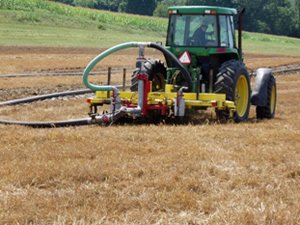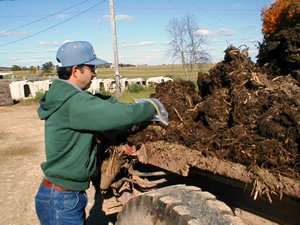-
Download:
My Results |
All BMPs
Manure Composting
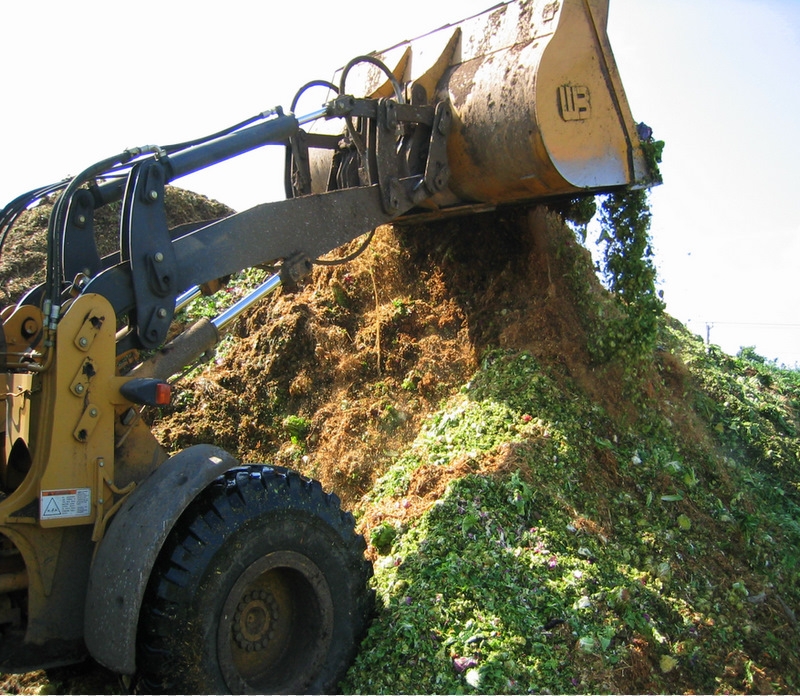 Compost containing turkey manure and wood chips from bedding material is dried and then applied to pastures for fertilizer. Benton, Arkansas. Photographer: Jeff Vanuga. Photo Courtsey of USDA NRCS.
Compost containing turkey manure and wood chips from bedding material is dried and then applied to pastures for fertilizer. Benton, Arkansas. Photographer: Jeff Vanuga. Photo Courtsey of USDA NRCS.
Practice Type: Management
Landuse/Agriculture Type: Row Crop, Pasture, Fodder, Rice, Animal Confinement
Climatic Zones: Temperate, Semiarid, Tropical
Regions: North America, South Asia, Europe
Pollutants Treated: Nitrogen, Phosphorus, Sediment
Description: Manure composting is a management practice where manure is mixed with a carbon source such as straw, sawdust or wood chips. After the mixing process, manure is stacked, re-mixed occasionally, and then allowed to self-heat. Composted manure has a lower nutrient mineralization or fertilizer value than conventional manure, resulting in fewer nutrients in runoff when compost is applied to soil. 1
Implementation Considerations: In some areas of the world, composting of manure may not be desirable as it is more valuable as a fuel source. When composting manure, surface and ground water proximity should be considered when selecting a compost site. The compost site needs to be on a plastic or concrete pad to minimize leaching to groundwater or in an area not prone to contamination of groundwater by leaching or where leachate can run off to surface water. Protecting the compost area from precipitation with a plastic cover or roof will reduce the risks of offsite contamination.
Scalable to small farms? Yes
1 Sikora, Lawrence J., and Peggy Preusch. "Composting Effects on Phosphorus Availability in Animal Manures." SERA-17, Minimizing Phosphorus Losses from Agriculture. Web. Jan. 2014. http://www.sera17.ext.vt.edu/Documents/BMP_composting_effects.pdf .
Manure Injection
Category: Manure Management
Practice Type: Management
Landuse/Agriculture Type: Row Crop, Fodder, Pasture
Climatic Zones: Temperate, Semiarid, Tropical
Regions: North America, South Asia, Europe
Pollutants Treated: Nitrogen, Phosphorus, Sediment
N Efficiency1: 25%
P Efficiency1: 0%
S Efficiency1: 0%
Description: Manure injection refers to the direct injection of manure into the soil, as opposed to applying it to topsoil, where it will interact with runoff water during storms. Injection makes it is possible for nutrients to directly reach the active soil layer in order to reduce nutrient leaching. It also reduces volatilization of ammonia since the manure is not left on the topsoil. Manure injections can be done for pressurized slurry and liquid manure from cattle and swine, and injection options for poultry litter are being developed. 2
Implementation Considerations: Injecting requires more time than surface applying manure and will require different machinery. Injecting can only be done with liquid manure types. Manure injection may not reduce nutrients as much in poorly drained soils.
Scalable to small farms? No
1 "Documentation: Source Data, BMP Effectiveness Values." Chesapeake Assessment Scenario Tool. Web. 2013. http://casttool.org/Documentation.aspx .
2 Estimates of County-level Nitrogen and Phosphorus Data for Use in Modeling Pollutant Reduction Documentation for Scenario Builder Version 2.2." Chesapeake Bay. Dec. 2010. Web. May 2013. http://archive.chesapeakebay.net/pubs/SB_V22_Final_12_31_2010.pdf.
Practice Type: Management
Landuse/Agriculture Type: Row Crop, Fodder, Pasture
Climatic Zones: Temperate, Semiarid, Tropical
Regions: North America, South Asia, Europe
Pollutants Treated: Nitrogen, Phosphorus, Sediment
N Efficiency1: 25%
P Efficiency1: 0%
S Efficiency1: 0%
Description: Manure injection refers to the direct injection of manure into the soil, as opposed to applying it to topsoil, where it will interact with runoff water during storms. Injection makes it is possible for nutrients to directly reach the active soil layer in order to reduce nutrient leaching. It also reduces volatilization of ammonia since the manure is not left on the topsoil. Manure injections can be done for pressurized slurry and liquid manure from cattle and swine, and injection options for poultry litter are being developed. 2
Implementation Considerations: Injecting requires more time than surface applying manure and will require different machinery. Injecting can only be done with liquid manure types. Manure injection may not reduce nutrients as much in poorly drained soils.
Scalable to small farms? No
1 "Documentation: Source Data, BMP Effectiveness Values." Chesapeake Assessment Scenario Tool. Web. 2013. http://casttool.org/Documentation.aspx .
2 Estimates of County-level Nitrogen and Phosphorus Data for Use in Modeling Pollutant Reduction Documentation for Scenario Builder Version 2.2." Chesapeake Bay. Dec. 2010. Web. May 2013. http://archive.chesapeakebay.net/pubs/SB_V22_Final_12_31_2010.pdf.
Manure Relocation
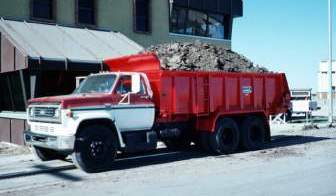 Solid manure ready for transport to the field for application. Source: Manure Management System, The Environmental
Protection Agency (EPA).
Solid manure ready for transport to the field for application. Source: Manure Management System, The Environmental
Protection Agency (EPA).
Practice Type: Management
Landuse/Agriculture Type: Animal Confinement
Climatic Zones: Temperate, Semiarid, Tropical
Regions: North America, South Asia, Europe
Pollutants Treated: Nitrogen, Phosphorus, Sediment
Description: Manure relocation refers to transporting manure from areas with excess nutrients to areas lacking in nutrients. Animal feeding operations with manure surpluses can avoid the need to increase storage capacity and the pressure to apply manure during high risk periods, thereby reducing losses of nutrients. 1
Implementation Considerations: Transporting manure is generally more expensive than transporting commercial fertilizers.
Scalable to small farms? Yes
1 "Best Management Practices, Today's Agriculture: A Responsible Legacy." Nutrient Best Management Practices. Web. Aug. 2013. http://dda.delaware.gov/nutrients/D17762BestMgmtbklt.pdf.; "EU Database of Best Practices." Living Water Exchange: Promoting Replication of Good Practices for Nutrient Reduction and Joint Collaboration in Central and Eastern Europe. Web. Sept. 2013. http://nutrient2.iwlearn.org/nutrient-reduction-practices/eu-database-of-practices/view .
Manure Sampling and Testing
Category: Manure Management, Nutrient Management
Practice Type: Management
Landuse/Agriculture Type: Animal Confinement
Climatic Zones: Temperate, Semiarid, Tropical
Regions: North America, South Asia, Europe
Pollutants Treated: Nitrogen, Phosphorus, Sediment
Description: Manure sampling and testing is the process of evaluating manure nutrient content to provide specific agronomic and environmental recommendations for manure use. It provides valuable information for optimizing crop production while minimizing environmental impacts. The four most common elements of manure testing are determining moisture, nitrogen, phosphorus, and potassium content. It can also be used to determine the manure’s actual nutrient content, appropriate application rate, and identify what other nutrients may be required by the crop. There may also be situations where micronutrient or metal contents are critical.1
Implementation Considerations: Liquid and solid manure need to be sampled each time the storage is emptied because the nutrient status varies with the time of year. Samples submitted for testing should be representative of manure as it is used/spread. The best time for sampling is during loading or land application. Multiple samples from a single source are generally necessary to better represent variability in manure characteristics. Applicability of this practice is dependent upon access to testing facilities and extension services.
Scalable to small farms? Yes
Scaling Considerations: If reliable testing facilities are available, this can be a component of nutrient management for small farmers. Also requires trials and information on crop responses to different levels of fertility and training of farmers on sampling and handling of samples.
1 Delaware: Nutrient Best Management Practices Handbook; Beneficial Management Practices: Environmnetal Manual for Crop Producers in Alberta
Practice Type: Management
Landuse/Agriculture Type: Animal Confinement
Climatic Zones: Temperate, Semiarid, Tropical
Regions: North America, South Asia, Europe
Pollutants Treated: Nitrogen, Phosphorus, Sediment
Description: Manure sampling and testing is the process of evaluating manure nutrient content to provide specific agronomic and environmental recommendations for manure use. It provides valuable information for optimizing crop production while minimizing environmental impacts. The four most common elements of manure testing are determining moisture, nitrogen, phosphorus, and potassium content. It can also be used to determine the manure’s actual nutrient content, appropriate application rate, and identify what other nutrients may be required by the crop. There may also be situations where micronutrient or metal contents are critical.1
Implementation Considerations: Liquid and solid manure need to be sampled each time the storage is emptied because the nutrient status varies with the time of year. Samples submitted for testing should be representative of manure as it is used/spread. The best time for sampling is during loading or land application. Multiple samples from a single source are generally necessary to better represent variability in manure characteristics. Applicability of this practice is dependent upon access to testing facilities and extension services.
Scalable to small farms? Yes
Scaling Considerations: If reliable testing facilities are available, this can be a component of nutrient management for small farmers. Also requires trials and information on crop responses to different levels of fertility and training of farmers on sampling and handling of samples.
1 Delaware: Nutrient Best Management Practices Handbook; Beneficial Management Practices: Environmnetal Manual for Crop Producers in Alberta
Manure Sheds
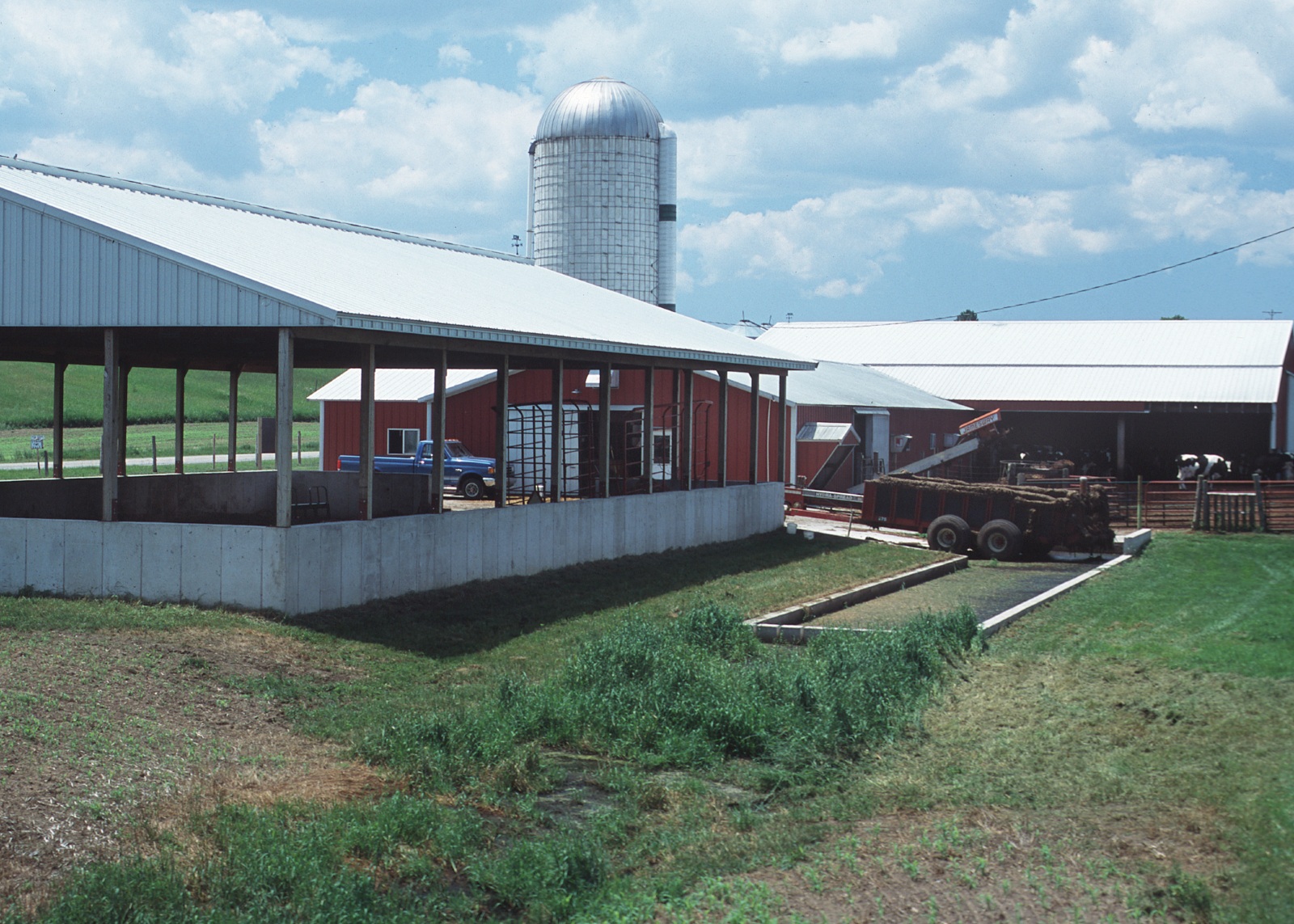 Roofed and concrete wall solid manure stacking facility with settling basin and filter strip. Grand Traverse County, Michigan. Photographer: Lynn Betts. Photo courtesy of USDA NRCS.
Roofed and concrete wall solid manure stacking facility with settling basin and filter strip. Grand Traverse County, Michigan. Photographer: Lynn Betts. Photo courtesy of USDA NRCS.
Practice Type: Structural
Landuse/Agriculture Type: Animal Confinement
Climatic Zones: Temperate, Semiarid, Tropical
Regions: North America, South Asia, Europe
Pollutants Treated: Nitrogen, Phosphorus, Sediment
Description: Manure sheds are roofed buildings that are used to stack dry manure and protect it from precipitation during the storage period. It is needs to be large enough to accommodate the equipment delivering and removing waste. Manure sheds encourage high nutrient retention and allow manure to be safely stored until appropriate times for land application, preventing unnecessary runoff and leaching.1
Implementation Considerations: To minimize the effects of storage facilities on nearby water bodies, animal waste management systems should not be located in flood plains.
Scalable to small farms? Yes
1 "Best Management Practices, Today's Agriculture: A Responsible Legacy." Nutrient Best Management Practices. Web. Aug. 2013. http://dda.delaware.gov/nutrients/D17762BestMgmtbklt.pdf .
